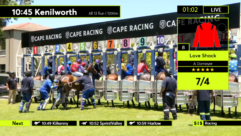Risk-preparedness and Mitigation for Live Events
Aug 14, 2012 12:24 PM,
By Scott Carroll, Executive Vice President & Program Director, Take1 Insurance
The recent Radiohead stage collapse in Toronto that left one dead and three injured could have serious ramifications for the live event industry. The tragic event carries many lessons as well potential ramifications and unintended consequences, both positive and negative. For example, calls for stricter regulations for stage construction and engineering may convince less experienced insurance providers to abandon the industry. And with fewer providers, there is less competition, which could lead to higher premiums.
The live event industry is a unique market for insurance providers, but many simply don’t have the knowledge or experience to fully comprehend the risks and liabilities. There have been several large outdoor stage collapses in the last few years, and it’s likely that the industry will form more stringent regulations and oversight for rigging jobs of this magnitude. As in any industry, if new regulations are implemented, some insurance companies will start to reevaluate their business in this market. Every company involved in live events should have an insurance carrier who knows the risks and has experience handling claims in this industry. It would also be wise for live event companies to speak with their current insurance provider to ask about their experience in this space and their plans to continue serving the industry.
While it’s possible that policies for outdoor events may soon have higher deductibles, they could also include per-event or seasonal pricing that allows higher fees to be levied for outdoor events. Further, as staging systems are increasingly upgraded to bring the look and feel of indoor events to the outdoors, the insurance industry needs to study the underwriting issues and address any new questions that need to be asked, as well as possibly introducing stricter risk mitigation requirements from clients. For example, more immediate onsite weather monitoring could be required, including barometric pressure and wind-speed readings, instead of relying on web-based weather services to monitor local conditions. A policy could also require that the promoter hire an onsite engineer who is granted ultimate authority to disallow certain rigged items on the stage if they are deemed unsatisfactory from a safety perspective, and to shut down the show for weather-related reasons.
It is heartbreaking that it takes a tragedy to motivate us to re-examine risk-preparedness and mitigation, but it is nevertheless crucial to learn from such events, both as individuals and as an industry. This is a chance to have the necessary dialog and develop strategies to safeguard crews, performers, and audiences, and to best manage the costs so those protections are viable while still allowing performers and audiences to share remarkable experiences. Together we can take the right professional steps to protect lives and livelihoods in the future.










